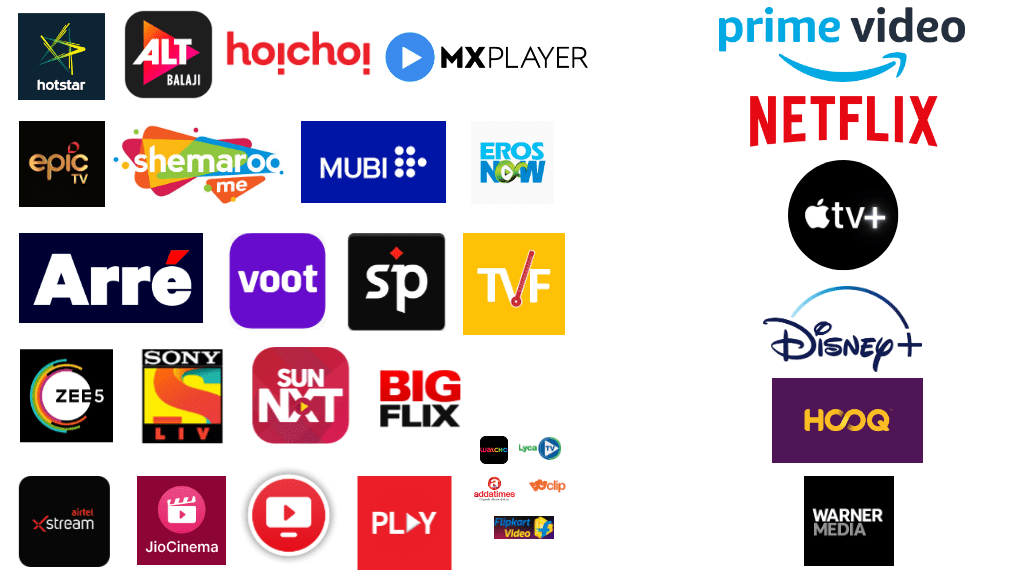- Regional content or International content?
- Can both coexist for an Indian user?
The question that constantly lurks in the mind of the user is which platform should he/she opt for in their spare time. Should they go for the international players like Netflix or Prime Video which allows the user to take a peek into the world of international movies and shows or the local platforms which is comparatively cheaper and contents closer to home.
India is the second largest smartphone market and OTT players home and abroad are vying for the piece of the pie. When Netflix made its presence in India in 2016, the platform gave a stiff competition for the already existing Hotstar. Soon more players mushroomed in India, local and international. India has emerged as the zone for battle for eyeballs because of the vast potential demographic. With the availability of cheap internet connections and the advent of 4G people were able to get the entertainment with just a swipe of their fingers.
International platforms like Netflix and Prime Video compete with several homegrown OTT players. They face their toughest competition from Hotstar which offers live streaming of cricket matches, especially those which feature India such as Premier League, ISL and Bundesliga matches in addition to movies, soap-operas, as well as content sourced from various sources including the acclaimed ‘Game of Thrones’, ‘Westworld, etc.
This has forced Netflix and Prime Video to focus not just on competitive pricing, but also start to lay emphasis on local language programming. One of Prime Video’s earliest Indian originals was Inside Edge (a show focused on cricket and Bollywood) while in 2019, Netflix released five original series and eight original films, including the Bard of Blood though the quality was questionable.
In spite of the best efforts of the above two, the Indian OTT platforms like Hotstar, MXPlayer, ALTBalaji, Voot, and ZEE5 find favour with Indian consumers. If one browses through the content catalogues of Indian platforms especially that of MX Player and Hoichoi, one can see they provide not only family-based content but also edgy content. The edgy content has only one target and that is the users between the age of 18-40. Cable TV is still a strong presence in Indian households especially with housewives. Though it has not been recognized in any official capacity, local OTT platforms do face stiff competition from cable TV.
International players like Netflix and Amazon Prime have raised the bar for homegrown OTT players in terms of quality content and pricing strategy. The homegrown OTT players have begun to target rural India with their regional content. The future of OTT seems to be heading towards a state of co-existence between the local and international content.
















На данном сайте можно найти данные по запросу, в том числе исчерпывающие сведения.
Базы данных включают граждан всех возрастов, мест проживания.
Информация собирается из открытых источников, что гарантирует надежность.
Нахождение производится по фамилии, сделав использование эффективным.
глаз бога программа для поиска людей бесплатно
Помимо этого предоставляются места работы плюс полезная информация.
Все запросы проводятся в соответствии с норм права, обеспечивая защиту несанкционированного доступа.
Воспользуйтесь предложенной системе, в целях получения искомые данные в кратчайшие сроки.